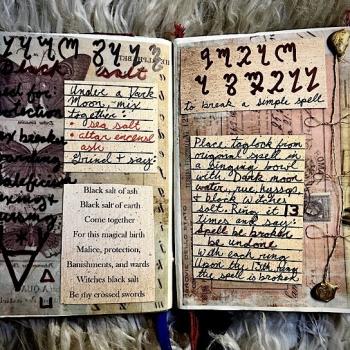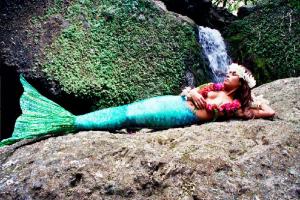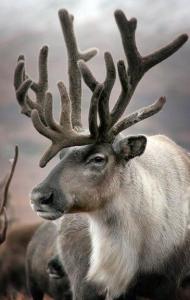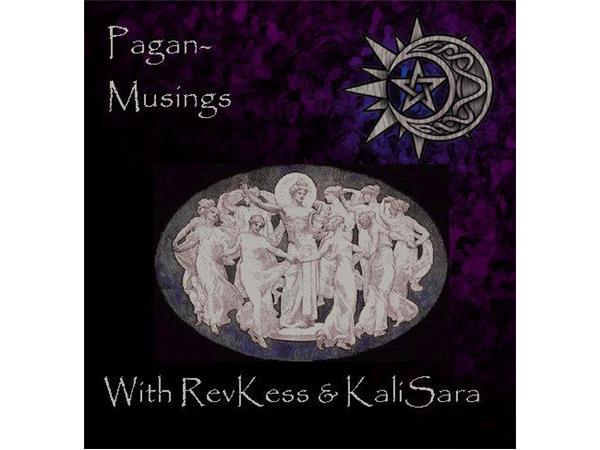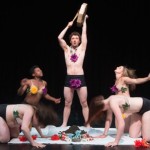Neo-Paganism has multiple centers, including Earth, Deity, and Self. This is the fourth in an 8-part series that explores Neo-Paganism as a Self-Centric “mystery religion”. This essay was originally published at Neo-Paganism.org.

“I will go down to self-annihilation and Eternal Death;
Lest the Last Judgement come and find me unannihilate,
And I be seiz’d and giv’n into the hands of my own Selfhood.”— William Blake, “Milton’s Journey to Eternal Death”
Ancient pagans made sacrifices to their gods. Animal sacrifice was common in the ancient world. Today, most Neo-Pagans do not sacrifice living beings. Some Neo-Pagans may make offerings as part of their spiritual practice. Such offerings may be as simple as pouring water onto the earth as a libation, or as complex as devoting one’s life to the service of divinity.
But there is another sense in which sacrifice remains an important part of some forms of Neo-Paganism, the mystical “sacrifice” of one’s ego to the divine forces of fate.
Surrendering to the Wheel
The Goddess is change. This is how many Neo-Pagans understand Her.
It is natural to resist change and to, in the words of Dylan Thomas, “rage against the dying of the light.” We want to live forever. But this is not our fate as human beings. We must surrender to change. For many Neo-Pagans, the inevitability of change is symbolized by the Wheel of the Year and the Spiral Dance of the Neo-Pagan Goddess. Neo-Pagans may strive to surrender to that finitude which is represented by the dark aspect of the Goddess. Through surrender to our fate, we are transformed, not to endless life, but to a meaningful life in the context of the cosmic cycle of change, what Mircea Eliade calls “Eternal Return“.
Joseph Campbell wrote, in The Hero With a Thousand Faces, that “The hero is the man of self-achieved submission.” “Only birth can conquer death,” wrote Campbell. Therefore, “When our day is come for the victory of death, death closes in; there is nothing we can do, except be crucified – and resurrected; dismembered totally, and then reborn.” In other words, we must not only come to terms with the fact that we will one day die, but we must also experience a change of consciousness whereby we cease to identify with our isolated individual ego-selves, and instead realize on a deep level that we are part of a greater whole that will survive our individual deaths. Mystics call this “ego death”.
This surrendering to fate is expressed mythologically in the stories of the Neo-Pagan Dying God. Starhawk explains the death of the God in this way:
“The Goddess is the Encircler, the Ground of Being; the God is That-Which-Is-Brought-Forth, her mirror image, her other pole. She is the earth; He is the grain. She is the all encompassing sky; He is the sun, her fireball. She is the Wheel; He is the traveler. He is the sacrifice of life to death that life may go on. She is the Mother and Destroyer; He is all that is born and is destroyed.”
“The God chooses to sacrifice [Himself] in order to remain within the orbit of the Goddess, within the cycle of the natural world, and within the ecstatic, primal union that creates the world. Were He to cling to any point on the wheel and refuse to give way to change, the cycle would stop; He would fall out of orbit and lose all. Harmony would be destroyed; union would be broken. He would not be preserving Himself; He would be denying his true self. His deepest passion, his very nature.”
“Ritualistic and mythical identification with the sacrificing God honors the life spark, even in death, and prepares to give way gracefully to new life, when the time comes for each of us to die. Waxing and waning, birth and death, take place within the human psyche and life cycle. Each is to be welcomed in its proper time and season, because life is a process of constant change.”
“The God is that force within us that chooses to surrender itself to the cycle, to ride the Wheel.”
Esoteric Ritual and Ego Death
Ken Wilbur writes that ritual sacrifice, from human sacrifice to the Catholic Eucharist, can be understood exoterically, as a rite of fertility, or esoterically, as a rite of transcendence which “works to undermine or dissolve the self in God consciousness”. Harold Jantz explains that all the great mysteries “must first make real to the initiate the meaning of death, total extinction, utter loneliness, and then lead him on, through deep ineffable terror to the mystic glowing hearth of rebirth, of constantly renewed life, of the awareness of his oneness with the totality of life.” R.D. Laing explains it this way:
“True sanity entails in one way or another, the dissolution of the normal ego, that false self competently adjusted to our alienated social reality: the emergence of the ‘inner’ archetypal mediators of divine power, and through this death a rebirth, and the eventual re-establishment of a new kind of ego-functioning, the ego now being the servant of the divine, no longer its betrayer.”
This is one of the purposes of some Neo-Pagan ritual. Through ritual, we may symbolically enact a voluntary offering of our transient self to the Goddess who is endless change. It is a renunciation of the need for control and permanence, for the sake of transformation and renewal. It is a saying “yes” to the Great Cosmic Round. Joseph Campbell writes,
“When the will of the individual to his own immortality has been extinguished—as it is in rites such as these—through an effective realization of the immortality of being itself and of its play through all things, he is united with that being, in experience, in a stunning crisis of release from the psychology of guilt and mortality.”
And Ken Wilbur explains it this way:
“The whole point of these esoteric ceremonies, rituals, prayers, etc., was to accept the death of the separate-self sense and thus rise to an identity or communion with the Great Goddess. This was a self-sacrifice, which allowed the individual to transcend the self without obliterating it, murdering it, or regressing to prepersonal stages. … These ceremonies and prayers became offerings of one’s soul to the Great Goddess, not another person’s body in blood to the Great Mother. The Great Mother demands blood; the Great Goddess demands consciousness.”
For more information, see Ken Wilbur’s Up From Eden: A Transpersonal View of Human Evolution, Starhawk’s The Spiral Dance, and Joseph Campbell’s Masks of God series (esp. vol. 3 on Occidental Mythology).


